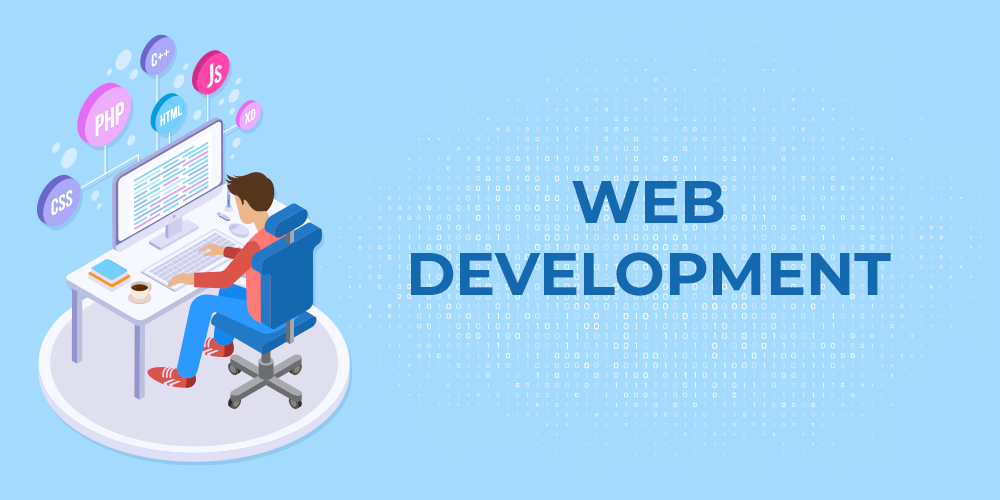Your Guide to Modern Internet Development: Fads and Ideal Practices

Emerging Technologies in Web Growth
The development of web development is marked by an unrelenting search of advancement, driven by the desire to enhance customer experience and improve procedures. Emerging innovations continue to reshape the landscape, using programmers effective tools to develop even more dynamic and responsive applications. Secret among these innovations are Dynamic Web Applications (PWAs), which mix the best of internet and mobile applications, providing offline functionality and improved performance.
Another significant development is the rise of Expert system (AI) and Artificial Intelligence (ML), which make it possible for customized customer experiences and data-driven decision-making. These technologies facilitate chatbots, referral systems, and improved search functionalities, thus changing exactly how customers connect with web applications.
Furthermore, the adoption of structures like React, Vue.js, and Angular has transformed front-end development, advertising modular layout and reliable state administration. On the back end, serverless architecture and microservices cultivate scalability and adaptability, enabling developers to concentrate on composing code without taking care of facilities.
Significance of Individual Experience
User experience (UX) has ended up being an essential focus in internet development, specifically as emerging modern technologies reshape communications. A positive UX not just improves customer fulfillment however likewise drives interaction, retention, and conversions. In a progressively affordable electronic landscape, services must focus on UX to separate themselves and satisfy customer expectations.
Efficient UX design is rooted in comprehending customer requirements and habits. This includes performing comprehensive research study, creating individual personas, and using functionality testing to gather understandings. By doing so, developers can produce user-friendly user interfaces that promote seamless navigation and lessen rubbing points.
In addition, a properly designed UX can significantly influence a web site's performance metrics. Research studies have actually shown that customers are more most likely to abandon a website if they experience inadequate usability or excessive packing times. Conversely, a streamlined, user-centric style can result in reduced bounce prices and boosted time invested in the website.
Embracing Receptive Style

Receptive style uses liquid grids, adaptable pictures, and CSS media inquiries to create a dynamic layout that readjusts in real-time. This methodology not just boosts functionality however likewise adds to improved online search engine positions, as internet search engine favor internet sites that provide a regular experience throughout devices. In addition, receptive design lowers the requirement for several variations of a website, enhancing maintenance and updates.
Moreover, receptive design cultivates greater interaction by using a tailored experience, keeping individuals on the website much longer and decreasing bounce prices. As customer habits continues to evolve, investing in responsive layout is crucial for businesses intending to enhance customer satisfaction and drive conversions. In summary, taking on responsive layout is not simply a pattern; it is a fundamental method that straightens with the assumptions of modern-day customers, ensuring availability and functionality no matter of the device they select to use.
Availability in Web Growth
Producing a website that is both receptive and available is necessary for getting to a informative post bigger audience. Access in internet development guarantees that all customers, no matter their capabilities or specials needs, can effectively engage with digital material. This consists of individuals with aesthetic, acoustic, cognitive, or electric motor impairments.

To achieve ease of access, programmers should adhere to the Internet Content Accessibility Standards (WCAG), which give a structure for making web material a lot more perceivable, operable, understandable, and robust. Secret practices include using semantic HTML aspects, providing alternative text for images, making sure enough color comparison, and allowing key-board navigating.
Furthermore, implementing ARIA (Accessible Rich Web Applications) features can improve access, particularly for dynamic material and advanced user interfaces. Testing with actual individuals, consisting of those with specials needs, is important to identify prospective barriers and enhance individual experience.
Inevitably, prioritizing ease of access not just enhances compliance with legal requirements yet also promotes inclusivity, enabling companies to get in touch with a wider target market. As internet development proceeds to advance, installing availability into the design and advancement process is not just an ideal practice; it is an honest duty that benefits everybody.
The Rise of Progressive Internet Apps
A significant shift in internet development has actually emerged with the increase of Progressive Web Apps (PWAs), which flawlessly combine the very best functions of mobile applications and conventional internet sites. perth australia web development perth. PWAs are made to offer individuals with a fast, trusted, and engaging experience, regardless of their internet connection. This is attained via solution workers, which allow offline abilities and background syncing, making certain that customers can access content also in low-connectivity scenarios
PWAs also utilize receptive design principles, ensuring that they function smoothly throughout a variety of devices and display sizes. This versatility is critical in an era where consumers increasingly count on smart phones for their on-line tasks. Moreover, PWAs remove the need for separate application shop installations, enabling simpler and extra available circulation.
The advantages encompass organizations also. PWAs can cause enhanced user engagement, higher conversion rates, and minimized growth expenses by preserving a single codebase for both internet and mobile systems. As companies aim to improve customer experiences while optimizing efficiency, the fostering of Progressive Internet Apps proceeds to expand, solidifying their status as an essential trend in modern internet growth.
Verdict
In verdict, modern web development necessitates a complex method that encompasses emerging technologies, individual experience, responsive layout, accessibility, and the implementation of Modern Web Apps. Sticking to these patterns and ideal techniques not just enhances user involvement however likewise fosters inclusivity, making browse around this site certain that electronic content is obtainable to diverse audiences. By prioritizing these elements, designers can create impactful applications that meet the evolving requirements of view website customers in a significantly electronic landscape.